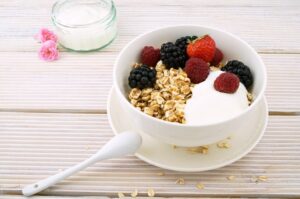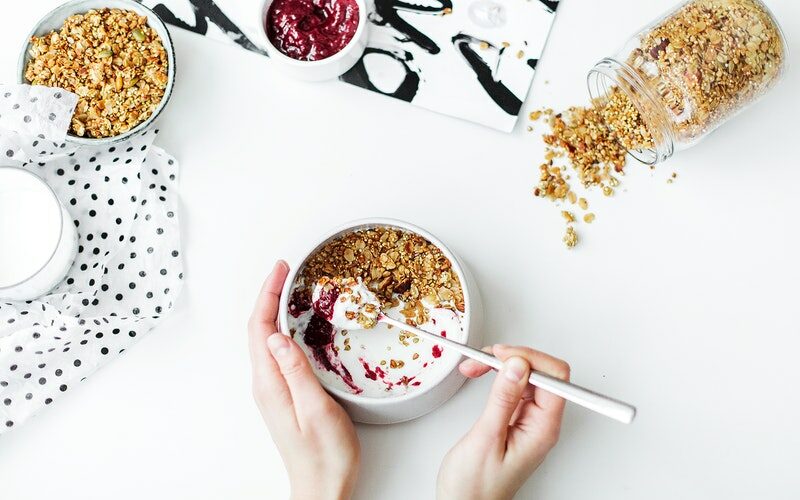What are the benefits of mixing kratom and kefir? Kratom has been in the market for a few years now and has become a popular natural product to treat pain, anxiety, depression or fatigue. It is also used by many people overcoming an addiction to cope with withdrawal symptoms.
In this post, we will talk about the benefits of combining kratom with kefir, another natural product with a lot of properties.
Properties of Kratom
Kratom is an evergreen tree in the Rubiaceae family (the same as coffee or gardenia) that grows in Southeastern Asia. Its botanical name is Mitragyna speciosa.
The leaves of Mitragyna speciosa contain a large number of alkaloids and other phytochemicals that have analgesic, stimulating or relaxing properties. Today, people consume kratom powder (kratom leaves ground into a fine powder) to cope with many conditions and ailments:
- Chronic pain
- Depression
- Anxiety
- Fatigue
- Insomnia
Many individuals also use kratom to cope with the symptoms of opiate withdrawal, while others claim that kratom helps them increase focus and motivation.
What Is Kefir?
Kefir is a cultured, fermented drink that contains probiotic bacteria, protein, and yeast. Although it originally comes from the Caucasian mountains, kefir is now very popular all over the world.
In order to make kefir drink, you will need kefir grains, which are tiny cauliflower-like beads with a gelatinous texture. People usually make their own kefir beverages at home and the tradition says that you should not buy or sell your kefir grains, instead you share them with your friends, family or other kefir lovers. However, if you don’t know anyone nearby who cultures kefir, you can buy your own kefir grains online or at a local store.
Kefir is a probiotic that has many health benefits:
- Protects your gastrointestinal tract and prevents digestive issues
- Has anti-diabetic properties
- Can improve your bone health
- May have anti-tumor properties
- Boosts your immune system
- Promotes collagen production
- Can lower blood pressure
- Has antioxidant properties
As we will see below, there are two main types of kefir: milk kefir and water kefir.
Milk Kefir
Milk kefir is the most popular kefir variety. It can be cultured in different types of milk, such as cow milk, goat milk or sheep milk. Additionally, people with lactose intolerance or vegans could use dairy-free milk instead, such as coconut milk, almond milk or rice milk.
When taking milk kefir, you are consuming the nutrients of both kefir and the milk you use for its preparation. Therefore, depending on the milk, the properties of that kefir may vary.

How to Make Milk Kefir?
- Add one tablespoon of kefir grains to a glass jar or bowl and cover it with milk (a cup of milk will do). Use plastic or wood spoons, never let your kefir grains touch the metal
- Cover the jar with butter muslin, cheesecloth or a coffee filter
- Let it sit up for 24 hours at room temperature
- Make sure that the milk has thickened. This means the kefir culture is complete
- Strain the kefir grains from the milk using a cheesecloth or a plastic strainer (don’t use a metal strainer!)
- Your kefir milk is ready to drink. You can store it in the fridge
- Reuse your kefir grains to make another batch
You can reuse your kefir grains indefinitely. In fact, you will notice that kefir grows with time and you’ll have more (or larger) kefir grains. This happens because kefir actually uses milk to feed.
Water Kefir
Water kefir is not as popular as milk kefir. However, it is a great option if you don’t like milk kefir or want a dairy-free option. If your water kefir grains are dried, you will need to rehydrate them first by placing them in a glass with water and sugar.
Once your kefir grains are hydrated, you can prepare your water kefir following these simple instructions:
- Pour ½ cup water in a glass jar
- Add ¼ cup sugar to the jar. You can also use maple syrup
- Stir
- Add the kefir grains and stir gently with a wood or plastic spoon
- Place a lemon slice (or another fruit of your choice)
- Cover the jar with a towel, coffee filter or cheesecloth (again, do not use metal)
- Let it culture for 2-3 days
Of course, water kefir grains are “reusable” and will continue to grow (they feed on sugar and fruit).
Benefits of Kratom and Kefir
By combining kratom and kefir, you will be able to avoid and relieve kratom nausea. Kefir will protect your stomach and prevent digestive issues due to kratom intake. Furthermore, kefir could also help you fight constipation. If you are regular kratom user, chances are that you are already familiar with kratom constipation.
Also, your overall health may improve thanks to the benefits of both kratom and kefir. It will help you boost your immune system, so your body will be better protected from diseases.
Kratom and Kefir Recipe
How can you combine kratom and kefir? A good idea is to mix kratom powder and milk kefir. Whereas many people find that kefir has a nice taste to it, for others milk kefir thick texture and milky flavor is far from good. Hence, using kefir to make smoothies seems a good choice. So, this kefir and banana smoothie may be a great choice to start!
Ingredients:
- 1 kratom dose
- 8 oz milk kefir (1 cup)
- 1 frozen banana
- 1 teaspoon chia seeds
Preparation:
- Cut the banana into pieces
- Place the kefir and the banana in the blender
- Mix until you get a smooth texture
- Pour the mix into a glass
- Add the kratom and the chia seeds
- Stir gently
You can use milk kefir in your favorite smoothie recipes! If you substitute dairy milk or yogurt for kefir, you will get a lot of benefits.



